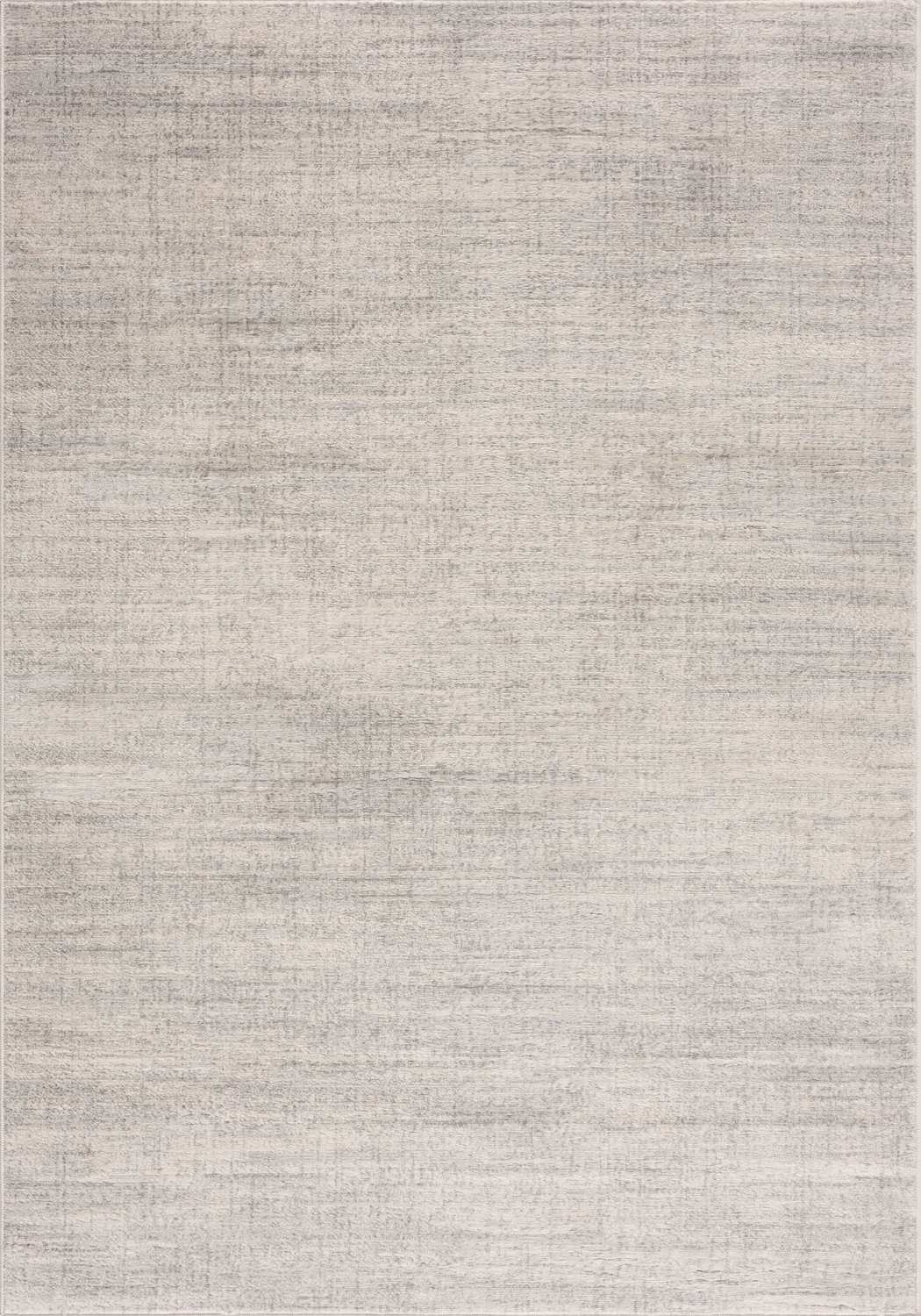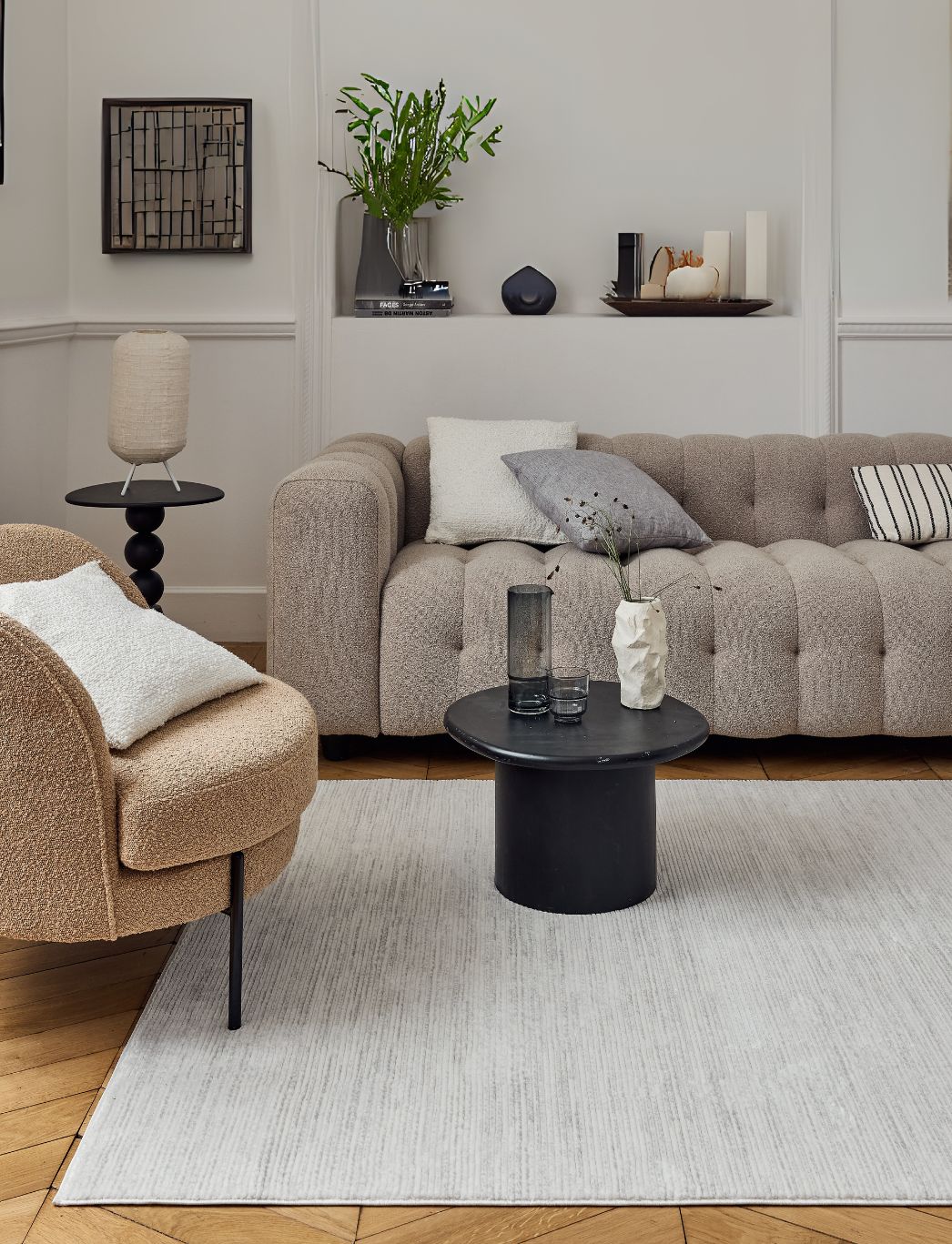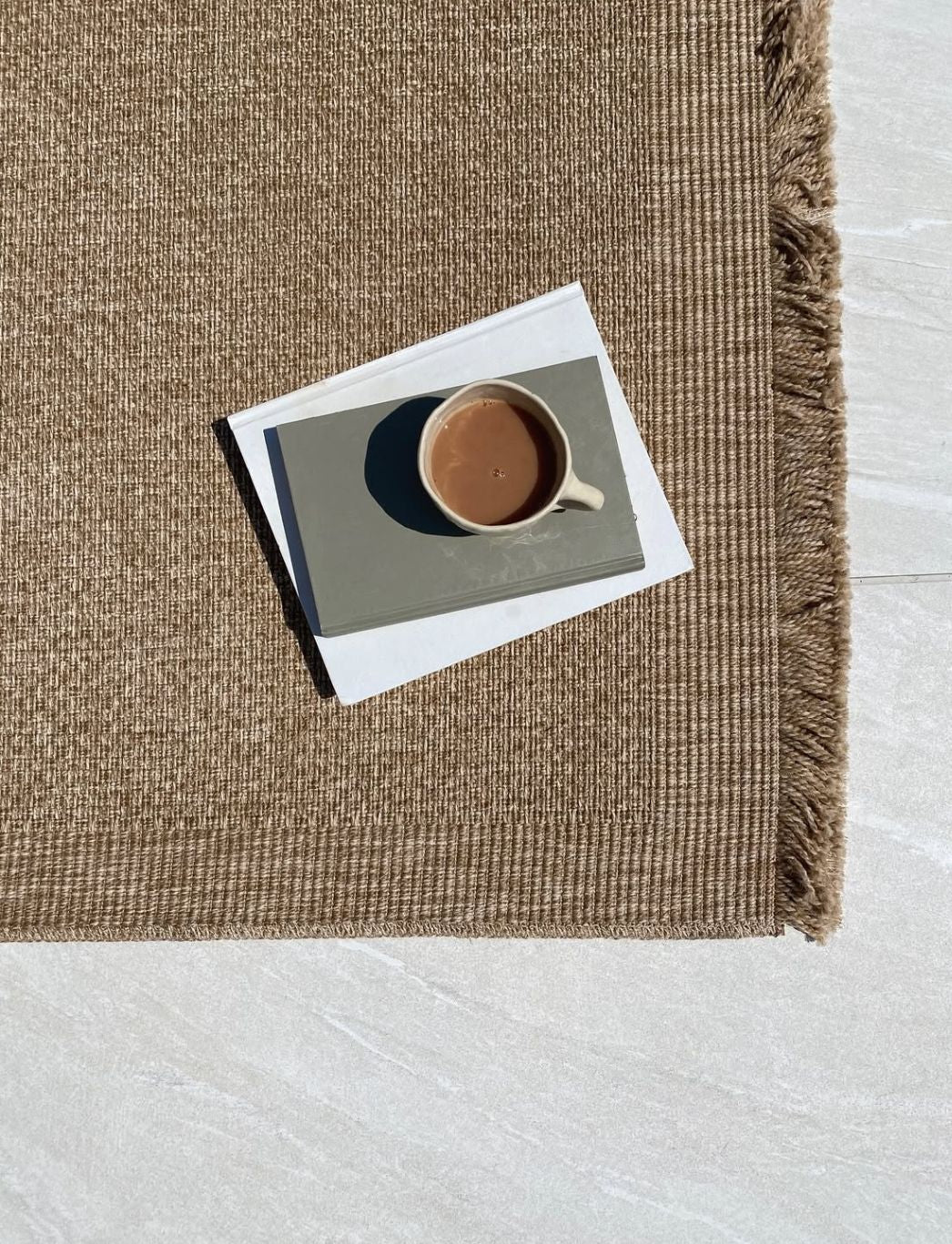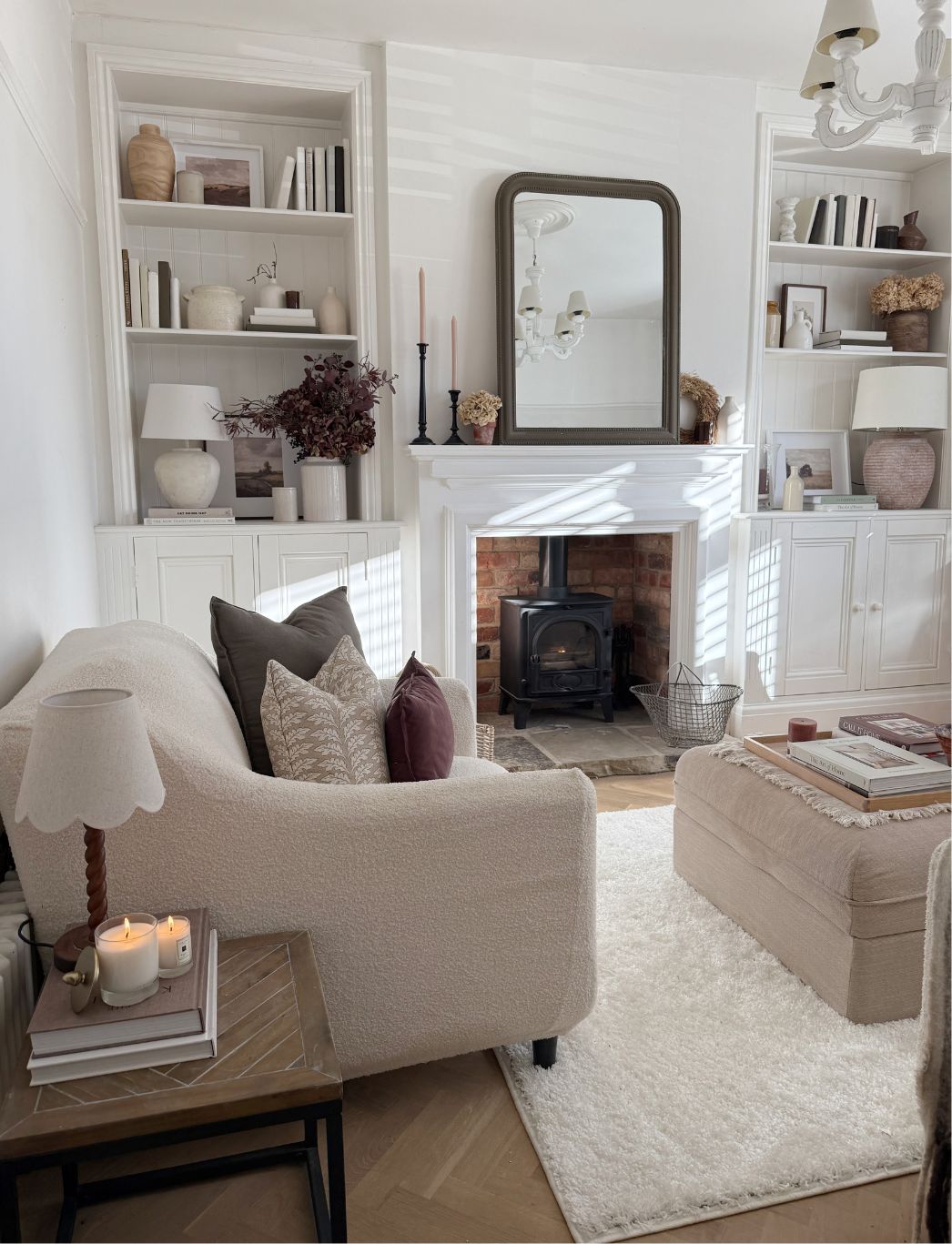Everything about Composite Decking

If you’re looking for alternatives to timber decks, you’ve probably come across composite decking. Manufacturers would tell you about all the benefits of installing composite deck tiles and boards in your outdoor living area.
However, it can be tricky to understand what composite decking exactly is, as most people do a great job explaining it. So if you are thinking about upgrading your outdoors, here is everything you need to know about composite decking.
What Is Composite Decking?
The word composite is used to define something that is made of various substances, materials, or parts. A combination of natural and synthetic materials is used to produce composite deck tiles and boards. In most cases, this is a mixture of wood fibre, recycled or virgin plastic, and some bonding agents or chemical additives. However, sometimes they’re also made of 100% polyester material.
The reason these composite deck boards are quickly becoming popular is that despite being an entirely man-made product, they have a natural appearance. In addition to that, they are easier to maintain than traditional wood floors and decks.
The natural wood that is generally used in flooring materials requires a lot of maintenance and can start deteriorating in a few years. However, due to added materials in composite decking, these last much longer.
High-quality composite deck boards have an additional layer of protection, also known as outer capping. This gives them a much longer life than natural materials.
There is a common misconception that composite decking only works outdoors. However, that’s not the case. If you want to give your indoors an aesthetic look, you can undoubtedly have composite decking tiles installed inside your house. You could even have a wall made with this material.
Here are some benefits of composite decking.

·Minimal Maintenance
As discussed earlier, the most significant benefit of installing composite deck boards in your house is that they are low maintenance. If your house features traditional wood decks, you’re probably already aware that they require expensive servicing for at least 1 to 3 years to maintain their natural look. In addition to that, you’ll have to replace them every 10 to 15 years. You also need to regular power-wash the area.
On the other hand, composite decking requires much less maintenance effort. You also save a lot of time and money that you would have been spending on having your wood decks services. They also require much less protection against weather agents. So unless there is a massive dust storm in your area, you won’t need to regularly power-wash the deck.
·More Durable
Generally, composite decking is more durable than traditional wood. However, it is essential to note that not all composite deck boards are made the same way. If you want a durable option, make sure to do prior research to see who produces the most sturdy and long-lasting composite decking in your region.
Once you have high-quality composite decking tiles installed on your deck, front porch, or any part of your house, you can forget it for years. It will still require some maintenance here are there but will be more durable and long-lasting than wood and other natural materials.
·More Aesthetic without the Drawbacks
One of the main reasons people install wooden floors and decks in their houses is because they look more aesthetic than plain tiles. It can make your house feel homier and connected with nature. However, this comes with the drawback of regular maintenance, which, in most cases, is not worth the effort.
With composite decking, you can still enjoy the aesthetic look of the wooden tiles without any of the drawbacks. These are designed to replicate the natural grainy look and patterns of real wood. By just looking at them, you won’t even be able to tell that they have polyester, plastic, and other materials. You can also place a nice vintage rug on the deck to compliment the look.

DIY Composite Decking
If you want to save some money, you can choose to install the composite decking boards yourself. This may require extra effort but isn’t that complicated to do. So if you’re looking for a fun DIY project that improves the structure of your house, here’s how to do it.
How to Build the Frame for Composite Decking
Before you can start installing the tiles, you will have to build a frame for composite decking. For this purpose, you will first have to determine the size of the deck. While you can install deck boards in smaller spaces, it is crucial that you figure out the spacing for the deck’s footing and joists.
Footings or piers are columns made of concrete material and act as a foundation for your deck. These extend into the ground and hold the deck in place. If you live in an area where the temperature goes down to freezing level, you will need to have longer footings to prevent structure warping.
Additionally, you will have to mark the spacing for your joists. Some buildings may have codes that specify joist spacing, but the general safety rule is to keep it 16 inches.
Once you have the spacing, footings, and joists properly marked out, you can start building the frame.
Step By Step Guide for Composite Decking
After determining how much space you need for your compost decking, you can start the following process.
- Start by flattening out the joists. This will prevent and wavy or uneven deck.
- To achieve a more natural look, hide the composite ends. You can do this by installing Trex deck boards around the perimeter, also known as the “picture frame” deck.
- Make sure to double-check the joist spacing before and after installing them. These ensure that your deck stays in place, so you don’t want any errors.
- Avoid random spliced in the long run by using splice boards. Make sure that the length of the splice boards matches the size of your deck.
- Create an aesthetic design by mixing and matching the material. Composite deck boards allow a lot of space for experimentation. So if you want to create a look with multiple different designs of wood, you can always do that.
- Determine your fastening system. You can choose between T clips, mini gaps, and face-fixed screws.
- Certain boards will need to be locked in place. This makes it easier to direct their movement during expansion and contraction.
- Afterward, you can start sliding composite deck boards into the frame.
- Once all the composite deck boards are in place, you may want to install fascia boards.
- Finish off your project by installing end caps or moisture seals.

Installing a Composite Decking Board
Installing a composite decking board yourself can be a hard process. Therefore, if you’re doing it for the first time, it is recommended that you get a professional to guide you. This will make the job much more manageable and prevent any silly mistakes. However, once you learn to do it yourself, you can redo and upgrade the deck without any additional guidance.
What Composite Decking is Used For: Versatile Outdoor Flooring Solutions
Composite decking serves as a durable and low-maintenance alternative to traditional wood decking. It's primarily used for outdoor living spaces such as patios, pool surrounds, and garden walkways. This versatile material is ideal for creating long-lasting decks that withstand various weather conditions. Homeowners and businesses alike use composite decking for rooftop terraces, balconies, and even boat docks, appreciating its resistance to rot, splinters, and insect damage.

What is Composite Decking Made Of: Innovative Materials for Durability
Composite decking is typically made from a blend of recycled wood fibres and plastic materials. This combination results in a product that mimics the look of wood while offering enhanced durability. The wood component often comes from reclaimed sawdust and wood chips, while the plastic may include recycled polyethylene or PVC. Some manufacturers also incorporate bamboo fibres or rice husks for added strength and eco-friendliness. This unique composition creates a material that's resistant to moisture, decay, and UV damage.
Disadvantages of Composite Decking: Considerations for Informed Choices
While composite decking offers many benefits, it's important to consider its potential drawbacks. One primary concern is the initial cost, which is typically higher than traditional wood decking. Some homeowners find that composite decking can feel less natural underfoot compared to wood. In direct sunlight, darker colours may retain more heat, potentially making the surface uncomfortable on hot days. Additionally, while resistant to stains, composite decking can still be susceptible to scratches and scuffs. It's also worth noting that despite its durability, composite decking is not completely impervious to fading over time.
PVC Decking: A Fully Synthetic Alternative
PVC decking offers another option in the world of low-maintenance decking materials. Made entirely from polyvinyl chloride, this synthetic decking is known for its exceptional resistance to moisture and mould. PVC decking is often lighter than composite options, making it easier to handle during installation. It's highly resistant to staining and fading, maintaining its appearance for years. However, PVC decking may lack the natural look and feel of wood or composite materials, and it can be more expensive than other options.
Is Composite Decking Recyclable: Eco-Friendly Considerations
The recyclability of composite decking varies depending on its composition. Many composite decking products are made from recycled materials, contributing to their eco-friendly appeal. However, the mixture of wood and plastic can make recycling at the end of life challenging. Some manufacturers offer take-back programmes for their products, ensuring proper recycling or repurposing. When choosing composite decking, look for options with high recycled content and inquire about end-of-life recycling options to make an environmentally conscious decision.
Benefits of Composite Decking: Advantages for Modern Outdoor Spaces
Composite decking offers numerous benefits that make it a popular choice for outdoor spaces. Its low maintenance requirements are a significant draw, as it doesn't need regular staining, sealing, or painting like wood decks. Composite decking is highly resistant to rot, warping, and insect damage, ensuring longevity. It provides a splinter-free surface, making it safer for bare feet and pets. Many composite decking options come in a wide range of colours and textures, allowing for greater design flexibility. Additionally, its durability and long lifespan can make it a cost-effective choice in the long run.

How Long Does Composite Decking Last: Durability and Longevity
One of the key selling points of composite decking is its impressive lifespan. On average, high-quality composite decking can last 25 to 30 years with proper care and maintenance. Some manufacturers even offer warranties of up to 50 years, demonstrating confidence in their product's durability. This longevity is due to the material's resistance to rot, decay, and insect infestation. While the colour may fade slightly over time, particularly in areas with intense sunlight, the structural integrity of the decking remains robust for decades, far outlasting traditional wood decking in most cases.
How Strong is Composite Decking: Structural Integrity and Load-Bearing Capacity
Composite decking is engineered to provide excellent strength and stability for outdoor applications. Its composition of wood fibres and plastic creates a material that's often stronger than traditional wood of the same dimensions. Most composite decking can support significant weight, typically ranging from 50 to 100 pounds per square foot, depending on the specific product and installation method. This strength allows for safe use in high-traffic areas and can support heavy outdoor furniture. However, it's crucial to follow manufacturer guidelines for joist spacing and installation to ensure maximum strength and longevity.
FAQ
What is the downside of composite decking?
Composite decking's main downsides include higher initial costs, potential for fading and scratching, and less natural appearance compared to wood.
What do I need to know about composite decking?
Composite decking is low-maintenance, durable, and resistant to rot and insects. It's made from a mix of wood fibers and recycled plastic.
How long does composite decking really last?
With proper care, composite decking can last 25-30 years or more, significantly outlasting traditional wood decks.
What goes under composite decking?
A proper substructure is crucial, typically including joists, beams, and sometimes a moisture barrier to ensure longevity and stability.
What ruins composite decking?
Harsh chemicals, excessive heat, improper cleaning methods, and heavy impacts can damage composite decking.
What should you not use on a composite deck?
Avoid using abrasive cleaners, pressure washers, and metal shovels on composite decks to prevent damage.
Is composite decking slippery when wet?
While some composite decking can be slippery when wet, many modern products feature slip-resistant textures for improved safety.
Does composite decking warp in the sun?
Quality composite decking is designed to resist warping, even in direct sunlight, unlike traditional wood decking.
Is composite decking worth the money?
Despite higher upfront costs, composite decking often proves cost-effective long-term due to its durability and low maintenance requirements.
Which is better, PVC or composite decking?
The choice depends on specific needs. PVC is 100% synthetic and more resistant to moisture, while composite offers a more wood-like appearance.
Does composite decking get hot?
Composite decking can get hot in direct sunlight, especially darker colors. Some brands offer heat-resistant technology to mitigate this issue.
What damages composite decking?
Excessive heat, harsh chemicals, improper cleaning methods, and heavy impacts can damage composite decking.
Does composite decking get scratches easily?
While more resistant than wood, composite decking can still scratch. Higher-quality products often offer better scratch resistance.
Does composite decking break easily?
Quality composite decking is highly durable and doesn't break easily under normal use conditions.
How long does composite decking last?
With proper maintenance, composite decking typically lasts 25-30 years or more.
What are the complaints about composite decking?
Common complaints include potential fading, heat retention, and the less natural appearance compared to wood.
Do you need to waterproof composite decking?
Composite decking is inherently water-resistant, but sealing can provide extra protection and enhance longevity.
Is composite decking slippery in winter?
Some composite decking can be slippery when icy, but many modern products feature improved traction for winter conditions.
What color composite decking is best?
Lighter colors tend to stay cooler and show less fading, while darker colors offer a more wood-like appearance.
Which composite decking is best for full sun?
Lighter colored composites with UV-resistant technology perform best in full sun, minimizing heat retention and fading.
What is the average life of composite deck?
The average lifespan of a composite deck is 25-30 years, with some high-quality products lasting even longer.
Does composite decking fade in the sun?
Some fading is possible, especially in the first year, but quality composites with UV protection resist significant color changes.
Can you ruin composite decking?
While durable, composite decking can be damaged by harsh chemicals, improper cleaning, and excessive heat.
Do composite deck boards scratch easily?
Higher-quality composite boards offer good scratch resistance, but they're not completely scratch-proof.
Which is better for decking, wood or composite?
The choice depends on preferences and budget. Composite offers lower maintenance and longer lifespan, while wood provides a natural look and feel.
Is composite decking very expensive?
Composite decking has a higher upfront cost than wood but can be more cost-effective long-term due to lower maintenance needs.
How long does composite wood decking last?
Composite wood decking typically lasts 25-30 years or more with proper care.
Does composite decking crack?
Quality composite decking is designed to resist cracking, performing better than wood in this aspect.
Do composite decks sag?
When properly installed, composite decks should not sag. Correct joist spacing is crucial to prevent this issue.
Is composite decking a good investment?
Composite decking can be a good investment due to its longevity, low maintenance, and potential to increase property value.
What is the most durable composite decking material?
High-density polyethylene (HDPE) based composites are often considered the most durable option.
What happens to composite decking over time?
Over time, composite decking may experience slight color fading and weathering, but it resists rotting, splintering, and warping.
Does composite decking stain easily?
Most composite decking is stain-resistant, but prompt cleaning of spills is recommended to prevent potential staining.
Which is better composite or plastic decking?
Composite offers a more natural wood-like appearance, while plastic (PVC) decking provides superior moisture resistance.
Is composite decking weather resistant?
Yes, composite decking is highly weather-resistant, withstanding sun, rain, and temperature fluctuations better than wood.
Are composite deck boards as strong as wood?
High-quality composite boards can be as strong or stronger than wood, offering excellent durability and load-bearing capacity.
Does composite decking scratch easily?
While more resistant than wood, composite decking can still scratch. Higher-quality products offer better scratch resistance.
Does composite decking last long?
Yes, composite decking typically lasts 25-30 years or more with proper maintenance.
Does composite decking burn easily?
Composite decking is more fire-resistant than wood, but it's not fireproof. Many products meet specific fire-safety standards.
What ruins composite decking?
Harsh chemicals, excessive heat, improper cleaning methods, and heavy impacts can damage composite decking.
Is it cheaper to use composite decking?
While composite decking has a higher upfront cost, it can be more cost-effective long-term due to lower maintenance needs and longer lifespan.
What is composite decking made?
Composite decking is a modern alternative to traditional wood decking. It's typically made from a blend of recycled wood fibers and plastic materials. This combination creates a durable product that resists rot, warping, and insect damage. Some manufacturers also incorporate bamboo fibers or rice hulls for added strength and eco-friendliness.
What is a composite deck?
A composite deck is an outdoor living space constructed using composite decking materials. Unlike traditional wooden decks, composite decks are made from engineered materials that combine wood and plastic. This results in a low-maintenance structure that offers the aesthetic appeal of wood without many of its drawbacks. Composite decks are known for their durability, color retention, and resistance to weathering.
What is the lifespan of composite decking?
Composite decking boasts an impressive lifespan, typically ranging from 25 to 30 years. Some high-quality composite products can even last up to 50 years with proper care and maintenance. This longevity is significantly longer than traditional wood decking, which often needs replacement after 10-15 years. The extended lifespan makes composite decking a cost-effective choice in the long run, despite its higher initial cost.
What is better than composite decking?
While composite decking offers many advantages, some alternatives might be preferable depending on specific needs. Natural hardwoods like ipe or teak provide unmatched beauty and can last up to 40 years with proper maintenance. PVC decking offers superior stain and scratch resistance. For those seeking eco-friendly options, bamboo decking is renewable and highly durable. The choice ultimately depends on factors such as budget, aesthetics, and maintenance preferences.
What is the downside of composite decking?
Despite its benefits, composite decking has some drawbacks. The initial cost is higher than traditional wood, often ranging from ''20'' to ''60'' per square foot installed. Some composites can fade or scratch over time, especially in high-traffic areas. Heat retention can be an issue, making the deck uncomfortable in direct sunlight. Some homeowners find that composite decking lacks the natural look and feel of real wood. Additionally, repairs can be challenging as damaged boards often need complete replacement.
Is decking cheaper than paving?
Generally, decking is more expensive than paving. The cost of decking materials, especially composite or high-quality wood, tends to be higher than most paving options. Installation of decking also typically requires more labor. However, the final cost depends on factors like material choice, area size, and site preparation. Basic paving might cost ''10'' to ''30'' per square foot, while decking can range from ''15'' to ''60'' or more per square foot.
Can you lay composite decking on concrete?
Yes, you can lay composite decking on concrete, making it an excellent option for upgrading existing patios or balconies. This process involves installing a sleeper system - a framework of joists - over the concrete to support the decking boards. Proper water drainage and ventilation are crucial to prevent moisture buildup. While this method can save on excavation costs, it may raise the height of your outdoor space, potentially affecting door thresholds or step heights.
Are composite decks hot?
Composite decks can indeed get hot in direct sunlight, especially darker colors which absorb more heat. This heat retention can make the deck uncomfortable for bare feet on hot summer days. However, many manufacturers now offer heat-resistant technologies and lighter color options to mitigate this issue. Some composites incorporate cooling pigments or reflective materials to reduce heat buildup, making them more comfortable in warm climates.
Is composite decking better than concrete?
Whether composite decking is better than concrete depends on specific needs and preferences. Composite decking offers better aesthetics, a softer walking surface, and is easier to install or replace. It's also more comfortable underfoot and provides better slip resistance when wet. However, concrete is generally more durable, lower maintenance, and often less expensive. Concrete also offers more design flexibility for intricate patterns or colors. The choice depends on factors like climate, intended use, and personal style preferences.
Is PVC a composite deck?
PVC (Polyvinyl Chloride) decking is not technically a composite deck, although it's often grouped with composite options. Unlike true composites that blend wood and plastic, PVC decking is 100% synthetic. It offers excellent stain and scratch resistance and is highly durable. PVC decking is typically lighter than composites and resists mold and mildew effectively. However, it can be more expensive and may lack the natural look of wood-plastic composites. Some manufacturers offer PVC products with wood-like textures to mimic the appearance of natural wood
Should you put a runner in a hallway?
Absolutely! A runner in a hallway is both functional and aesthetic. It protects your floor from high traffic wear, reduces noise, and adds warmth underfoot. Visually, a runner can elongate your space and create a welcoming first impression. It's an excellent opportunity to introduce color, pattern, or texture that complements your home's overall design.
What color goes with grey carpet in a hallway?
Grey carpet in a hallway offers a versatile backdrop for various color schemes. Bold jewel tones like emerald green or sapphire blue create striking contrasts. For a softer look, consider pastel shades like blush pink or pale yellow. Warm metallics such as gold or copper add a touch of luxury. Remember, the key is to choose colors that complement your existing decor and create the desired atmosphere in your entryway.
Can you put 2 runners in long hallway?
Yes, using two runners in a long hallway is a clever design solution. This approach allows you to cover more ground while potentially saving money compared to a single custom-length runner. Ensure the runners are identical or highly complementary in style and color. Leave a small gap between them to create a deliberate, stylish look. This method also makes cleaning and replacement easier in high-traffic areas.
How do I choose a hallway runner?
Choosing the right hallway runner involves several considerations. First, measure your space accurately to ensure proper fit. Consider the traffic level and choose a durable material accordingly. The pattern and color should complement your existing decor. Opt for a low-pile or flat-weave design for easy cleaning and to prevent tripping. Don't forget to factor in maintenance requirements and your budget. A well-chosen runner can significantly enhance your hallway's appearance and functionality.
What color should hallway runners be?
The color of your hallway runner should harmonize with your overall interior design. Neutral tones like beige, gray, or taupe are versatile and timeless. For a bolder statement, consider rich, deep colors that can hide dirt and add warmth. If your hallway lacks natural light, lighter colors can help brighten the space. Remember, the runner is an opportunity to introduce accent colors that tie into your home's color scheme.
What is the rule of thumb for hallway runners?
The primary rule of thumb for hallway runners is to leave 4-5 inches of floor visible on each side of the runner. This creates a balanced look and prevents the space from feeling cramped. The runner should stop a few inches short of doorways. In terms of length, aim to cover most of the hallway, leaving equal floor space at each end. These guidelines ensure your runner enhances rather than overwhelms your hallway.
Is grey carpet still in style?
Grey carpet remains a popular choice in interior design. Its versatility and neutral appeal make it a timeless option. Grey carpets offer a sophisticated backdrop that complements various color schemes and decor styles. The trend has evolved to include different shades and textures of grey, from light heathers to deep charcoals. When paired with the right accents, grey carpet can create a modern, elegant, or cozy atmosphere, depending on your preference.
What type of rug is best for a hallway?
The best type of rug for a hallway is one that can withstand heavy foot traffic while maintaining its appearance. Low-pile or flat-weave rugs are ideal as they're easier to clean and less likely to trip over. Materials like wool or synthetic blends offer durability and stain resistance. Consider patterned rugs to help hide dirt and wear. For added practicality, look for runners with non-slip backing or use a rug pad to keep the runner securely in place.
How to position a hallway runner?
Positioning a hallway runner correctly is crucial for both aesthetics and safety. Center the runner in the hallway, ensuring equal space on both sides. The runner should start a few inches from the entrance and end before any doorways or stairs. If your hallway has multiple doors, position the runner to create a clear path to each. For long hallways, consider using multiple runners with small gaps between them for a deliberate, stylish look.
How do I make my hallway look less long?
To make a long hallway appear less elongated, try these design tricks: Use a runner with a bold pattern or horizontal stripes to break up the length visually. Paint the far wall a darker color to create the illusion of a closer endpoint. Install mirrors on one side to add depth and reflect light. Consider hanging artwork at eye level to draw attention away from the length. Adding console tables or other furniture pieces along the sides can also help break up the space and add interest.
Do people still use hallway runners?
Absolutely! Hallway runners remain a popular and practical choice in home decor. They offer numerous benefits, including protecting flooring, reducing noise, and adding warmth to often overlooked spaces. Modern design trends have revitalized hallway runners with fresh patterns, colors, and textures. They're seen as an opportunity to make a style statement in transitional spaces. From traditional to contemporary homes, hallway runners continue to be a functional and decorative element in interior design.
Related Blog Posts










Leave a comment